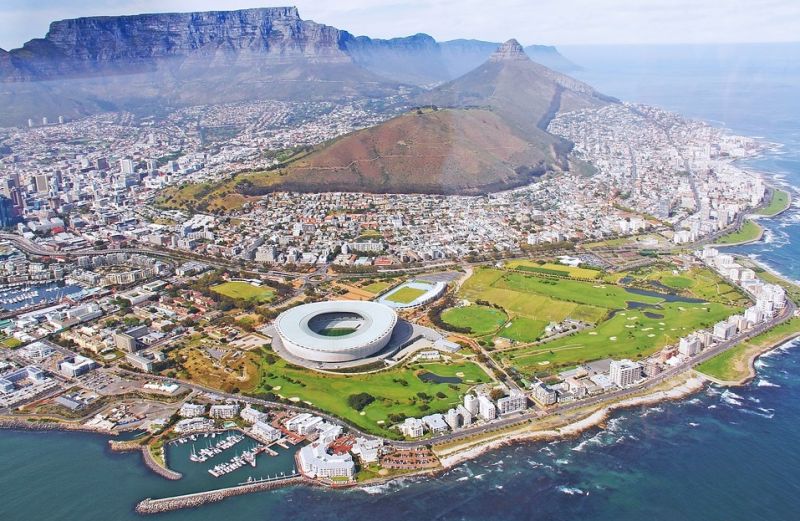Digital Technology is Key to Avoiding Cape Town’s Next Water Crisis
Published on by Water Network Research, Official research team of The Water Network in Academic
Cloud-based IT and smart water-management devices are leading the way in protecting water resources in SA and around the world.
The latter part of 2017 and the early months 2018 have been tough for residents of the Western Cape, but thanks to responsible water use and other measures, it looks like the taps will stay on for the rest of the year, provided the rainy season arrives on time.
 The Western Cape’s water woes have brought home the stark reality that the water supply needs to be carefully managed if we are to avert periodic crises brought on by drought and provide universal access to safe drinking water. Sustainable water sources need to be developed, and water and sanitation infrastructure needs to be upgraded to cope with expanding urban populations.
The Western Cape’s water woes have brought home the stark reality that the water supply needs to be carefully managed if we are to avert periodic crises brought on by drought and provide universal access to safe drinking water. Sustainable water sources need to be developed, and water and sanitation infrastructure needs to be upgraded to cope with expanding urban populations.
In many parts of the world, hundreds of millions of people still lack access to clean and safe drinking water. A 2017 joint monitoring report by Unicef and the World Health Organisation (WHO) put that number at more than 844-million people worldwide, many of whom live in Sub-Saharan Africa. Among the worst affected are those living in urban areas where population growth and rapid urbanisation are outstripping already inadequate infrastructure.
Water management starts with proper maintenance of the network. According to a 2017 GreenCape market intelligence report, South African cities lose some 37% of their water to leaks, a problem common to many countries — the World Bank estimates that utilities around the world lose between 25% and 30% of their water through leaks. The water infrastructure in the Western Cape is in much better condition than in many other places due to a major upgrade following a severe drought in 2003-04, and a lot can be achieved by preventing unnecessary leaks.
Detecting leaks, especially in underground pipes, used to be extremely difficult and costly. Thanks to cloud-based IT coupled with smart flow-measurement devices, however, it is now possible to locate leaks and faults by analysing data from a water network and using statistical algorithms to detect anomalies.
Other parameters, such as water quality, can be monitored with sophisticated water analysers that can measure contaminants down to parts per million or even billion. Once a water network is connected to the cloud, there is the possibility of segregating sections, if pollution or infectious agents are detected. With some devices, operations centres can monitor water networks and transmission pipelines around the world, providing utilities with real-time intelligence to ensure high levels of system security and reliability, while reducing risks and costs.
The Western Cape’s current problems stem primarily from its dependence on surface reservoirs, which rely on rainwater. Its dams provide about two thirds of the water supply and usually have enough to withstand up to three years of lower-than-average rainfall. But the region is now in its fourth year of drought, which has led to the current near-critical situation.
With rainfall levels unpredictable, there is a clear need for investment in alternative water sources. Tapping groundwater is one possibility, but in coastal regions desalination may be a better alternative. New technologies in this area have lowered the costs and environmental impact, making desalination plants more feasible. When considering large investments in alternative water supplies, the costs need to be weighed against not only the cost of drought but also from diminished economy activity that a prolonged and severe drought can cause.
Finally, there is the management of water consumption. On the whole, cities with a developed water supply infrastructure are wasteful of water, with both individual households and industries using considerably more water than they actually need. In the case of Cape Town, water consumption has been cut by more than half as a result of the shortages, and the city is now using about 500-million litres of water a day (approximately 125 litres per person).
As with electricity, consumers can be encouraged to use less water by installing water meters, and having households and business pay for the water they consume. The use of incentives and penalties can also encourage responsible behaviour, as the Western Cape has shown.
With climate change expected to lead to more extreme weather events, governments and businesses need to consider how best to manage water resources. In the Western Cape and many other areas of SA, the frequency and severity of droughts are likely to increase, as is flooding. Combined with expanding urban populations and land development, the consequences could be very serious indeed.
Fortunately, the rapid advance of technology is providing solutions to avert and mitigate the impact of climate change. We may not be able to control the weather, but we can prepare for it and, in so doing, limit our own environmental footprint so as to delay or even halt global warming and mitigate the impact of climate change.
Source: Business Day
Media
Taxonomy
- Water Scarcity
- Technology
- Scarcity